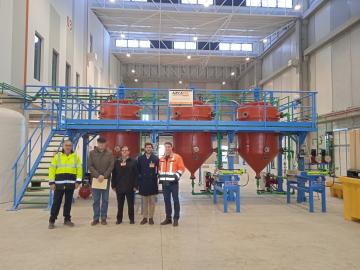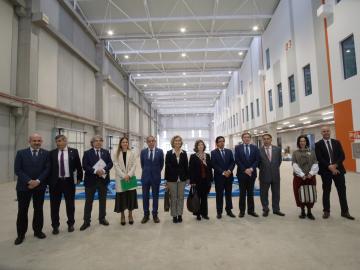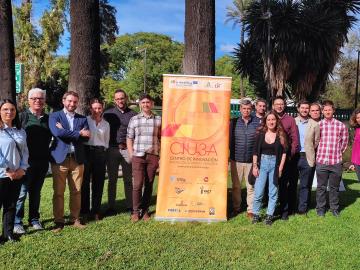Smart Factory Challenge: New materials, steel
As part of the Smart Factory Challenge, what is considered here is a line of research involving the new materials to be integrated into the challenge proposed. The goal of this line will be the study and research of new manufacturing materials that are not currently used on this kind of metallic structure, focussing on the most important in terms of quantity and cost, such as steel and paint. The goal is very ambitious in that it aims to introduce new materials into the industry, such as steels with greater elasticity, thermo-mechanical steels.
Chief researcher
Researcher
Location
Technology
Structural analysis of new steel materials (buckling and fatigue behaviour)
Allied agents
Summary of the proposal
A study is to be carried out of the materials used to manufacture wind turbine towers and particularly of the steels currently in use. The study and a series of tests will be performed with the aim of achieving a new kind of steel based on a fine-grained structure. This is to be done with the goal of increasing the welding parameters; improving certain parameters of the steels used, such as the toughness; studying the critical variables of the materials; as well as a reduction in the thickness of the walls of the turbine towers. The aim is to improve productivity and reduce costs. In the following sections on methodology and expected results, the actions to be carried out and the objectives set will be specified.
The first principal line covers the study and development of current design methodologies applied to the calculation of buckling, especially local buckling, covered, in regulatory terms, by Eurocode 3, parts 1-6. This study of this phenomenon of critical instability in the tower section of a turbine considers more than one line of optimization, with optimization being understood as an improvement in terms of the cost improvement resulting from the drastic reduction in the thickness of the turbine tower wall. This reduction would bring not only a saving in terms of raw materials, but also improve welding times.
The study’s second principal line, and maintaining the same spirit, is the study of welded joints and their geometrical definition. What is proposed is the study and development of the behaviour and improvement of the welded joints linked to wind energy products. The introduction of thermo-mechanical steels and the modification of welding processes opens up the need to reconsider the generation of curves that determine the behaviour of these joints under real fatigue. Given that geometrical definition is the critical parameter determined in existing steels in the wind power industry, the productive control of geometrical parameters should be tested, monitored and serialized in order to be able to combine it with the three previous lines of research for an optimum solution in terms of costs.
Project goal
The goal is to carry out the introduction of new thermo-mechanical steels that make it possible to use higher welding parameters, increasing welding productivity and maintaining the current quality level. To carry out this study requires a process of trial and error, readjusting welding intensities, voltages and speeds, in order to determine what is the maximum heat input that these steels can assume.
Expected results and indicators
The research and development of new materials would involve:
1. The analysis of the processes of welding thermos-mechanical steels, objective S420M/S460M.
2. The application of the increase of this elastic limit to the calculation of buckling.
3. The improvement of buckling methodologies linked to research into the real defects of the pieces to be studied.
4. The study and generation of fatigue curves and the definition of critical variables for the process.
5. The modelling of fatigue-based damage with regard to offshore corrosion environments.
Although what is proposed is to study the mechanical and dynamic behaviour of new materials, it is essential for the industry to see how they are affected in terms of the painting process and associated corrosion.
Potential technological impact of the project (TRL)
The project will progress from an initial TRL of TRL2 to an expected final one of TRL5, according to the following steps:
1. TRL2: Concept or Technology Formulated. Based on certain defined lines of research.
2. TRL3: Proof of Concept. According to these lines, and after a detailed analysis of the state of the art, a proof of concept will be outlined, whose initial results might vary the essential lines of research initially planned.
3. TRL4: Validation at the Laboratory Component Level. The aim is to carry out a complete campaign of tests that makes it possible to analyse the structural behaviours of new steel materials applied to the wind power industry.
4. TRL5: Validation at the Component Level of a relevant environment. The prior laboratory prototyping will be tested at the R&D centre by means of the development and validation of a dummy structure.




